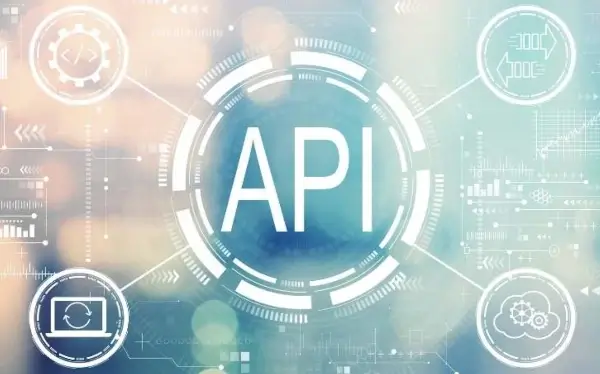
Whether you're a business that relies on Amazon reviews and seller feedback or planning a much-needed holiday through your favorite travel comparison site, everyday activities like these wouldn't be impossible without APIs.
An integral part of app development, API technology is interwoven into a rich tapestry of popular applications that companies and consumers use daily. Without them, there would be no smartphones, social media, or instant messaging. Worse still, online shopping, bookings, and banking would be a no-go too. The digital fabric of society would quite literally fall apart at the seams without them!
With increasing numbers of developers relying on APIs to enable programs to communicate crucial data smoothly and function securely and quickly, APIs are the digital embroidery that holds systems together.
What Is an API in Simple Terms?
Short for Application Programming Interface, an API is a type of software designed to connect applications (apps) and software services to share and exchange data with as little effort as possible. In simple terms, APIs act as translators, literally sitting between two software pieces and helping them 'speak' to each other.
It is used in everything, even in what might be considered a simple task, like managing a domain. In that case, if, for example, you have a domain registration, updating DNS records, requesting SSL certificates, and transferring or registering new domains from custom scripts, it is easy with an API.
What is meant by API testing?
An API test essentially tests the application programming interface directly at the message layer to ensure the data is being transmitted correctly. Like any physical machinery, API testing is necessary to ensure the interface is performing correctly and if any improvements can be made.
There are several API testing approaches, such as functional, load testing, runtime, and detection error testing, but fear not, since we live in an age of increasing automation when it comes to API testing, there are many test automation benefits to discover, too.

So, Why Is It Important To Do API Testing?
Clearly, there's never been a better time to invest in API development. Providing access to essential data and services from thousands of independent sources with a single query, APIs hold the power to drive innovation and productivity and can even be monetized in some instances, e.g., charging for API access or providing services through your API.
But why else is API testing necessary?... Other significant points to consider include:
- Very cost efficient
API testing helps cut support costs and speed up resolution times. Detecting and resolving any issues before they turn into production issues will help to reduce costs further.
- Less risks involved
Regularly monitoring and testing your network to ensure your API is connected, responding, and delivering accurate content reduces the risk of failed online transactions and loss of revenue.
- Faster time to market
By identifying API bugs or glitches early on, you can considerably reduce the time it takes to deliver your product to the market. A shorter time to market can mean more revenue, market share, higher customer satisfaction levels, more flexibility to market changes, and endless opportunities to test and improve the system.
- Secure encryption
API security testing will flag up any vulnerabilities within the system and help you plug the gaps. To keep sensitive data safe, quality APIs are secured through an SSL connection or TLS encryption protocol like HTTPS.
- Easy integration
API testing keeps your integration levels stable and ensures bugs aren't forming within other connected APIs.
For example, one of the most popular API integrations of 2022 was the TokApi mobile version, a TikTok mobile API that helps developers search for their heart's content.
What Do You Check When Performing API Testing?
API testing offers so many benefits that it's hard to know where to start to ensure you get it right. But there's no need to worry, as we've done the hard work for you! For absolute peace of mind, check the following points when performing your next API test(s).

- The accuracy of the data
The most common way to validate API data is through static analysis, dynamic analysis, and fuzz testing.
- HTTP status codes/error codes
Analyzing your HTTP status codes will be especially helpful for integrating an API for the first time, which will indicate any error responses that must be addressed. There are a variety of API status error codes to look out for, but the most common ones tend to be '404 Not Found Error' and '500 Internal Server Error'.
- Schema validation
Supplying assurance that the data adheres to structures, patterns, and data types you've set up, schema validation helps you to check if incoming traffic satisfies previously provided API schema.
- Data type, validations, order, and completeness
- Authorization checks
Authentication and authorization checks will ensure that only authorized users can gain entry to your API's final destination and that your API responses remain steady and secure.
- Application of response timeout
API response timeout measures a request's total time to be processed and answered, e.g., how long a response takes an HTTP request. When this happens, an error code is returned containing details as to why the timeout has occurred. Timeouts typically happen because the call involves too much data or a network issue.
- Performance testing
API performance testing reduces the risk of bottlenecks that could deeply impact your web and mobile apps and third-party services that access the system(s).
API performance testing is split into two main categories: functional testing and load testing. Whereas API functional testing isolates performance issues, API load testing lets you observe how the API behaves under similar user traffic and helps your developer adjust it accordingly.
- Security testing
API security testing is essential to 'stress test' your API, root out any vulnerabilities, and fix any security issues as quickly as possible.

How Can We Use Automated API Testing?
As AI progresses, automated testing has become necessary across many industries - felt none more so within the tech and finance sectors. After all, API monetization is up 16% in the financial sector. As the reliance on test automation increases, sourcing a list of automated software testing tools is even more crucial for automating an array of specialist software testing requirements.
Considerably speeding up workflow processes and making them much more efficient, in terms of automating API testing, the most notable benefits include:
- Improved test coverage
- Fewer manual tasks
- Less integration is required within test environments
- Swift feedback delivers quicker test results
- Quick and easy to implement
- Smoother test maintenance
- Higher levels of trust
- Lower costs
- Interface dependent
What Are Common Challenges in API Testing?
Like anything in life, API testing doesn't come without limitations. Here are just a few challenges to be aware of and ways to effectively deal with them.
Getting a good handle on the observability of your API interactions can be quite a challenge. APIs often lack a flashy graphical user interface (GUI), making it tricky to see how they talk to the rest of the system.
But here's the magic touch: combining UI (User Interface) testing with API testing is like turning on the floodlights for observability. Suddenly, you can see things more clearly, understand how your APIs work, and easily spot any issues. It's like having a high-powered telescope to enhance your observability, helping you find and fix problems without missing a beat.
Another challenge in API testing is ensuring a seamless user experience. Usability testing can help identify user interface issues and ensure the API is user-friendly.
API Setbacks
Creating, managing, and testing APIs is a highly skilled task. So, if your team lacks essential technical API testing skills, it's likely to cause delays in your release schedule. You can use developers or experienced software testers to fill the skills gap or provide your team with the latest programming language training.
Limited Visibility / User Interface Risks
As APIs don't have a GUI (Graphical interface), it can be challenging to visualize exactly how the API communicates with other system parts. Combining UI (User Interface) testing and API testing will make detecting and remedying problems easier.
Security Vulnerabilities
If APIs aren't tested and secured properly, they can become an access route for savvy hackers. When dealing with sensitive data, it's always better to be safe than sorry! So, it's essential to encrypt all data, consider a 'Zero Trust Approach,' and constantly watch over APIs 24/7.
Time-Consuming
Developing and executing test scripts for APIs is one of the most challenging elements of software testing, so it often takes longer to complete than other tests. You can cut your API test times in half by utilizing automated API testing.
Insufficient Documentation
Without the correct documentation, API testing can seem like mission impossible! But there are ways around it, even if you have zero evidence. Browser' Developer Tools' will help you investigate what's going on under the surface and inspect the application's requests and responses.
Also, check if your company's Dev Team can provide access to the test build environment, as it may have a debugging setting turned on that includes logging interactions with external services.

Final Thoughts
Ideal for integrating new applications with existing software systems, APIs save valuable time and money by leveraging existing code. In turn, this considerably heightens development speed and helps to build the foundation of a consistent product experience for customers, employees, and shareholders at scale.
So, if you're looking for seamless connectivity and first-rate API security, understanding your specific API needs is the best place to start. Combined with the points raised above, you'll soon be reaping the many benefits API testing offers.


 Copyright 2000-2026, WebSitePulse. All rights reserved.
Copyright 2000-2026, WebSitePulse. All rights reserved.